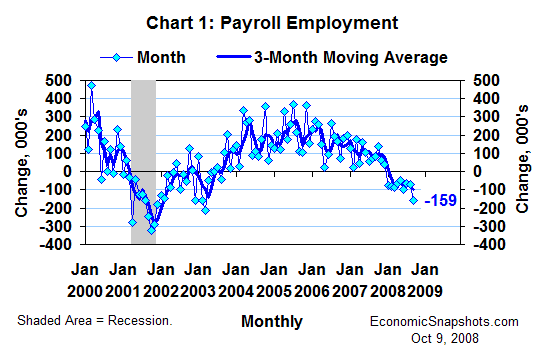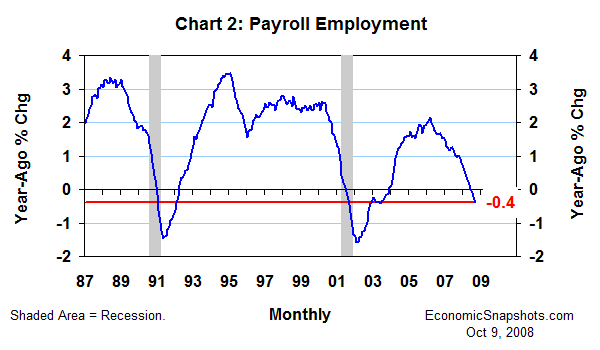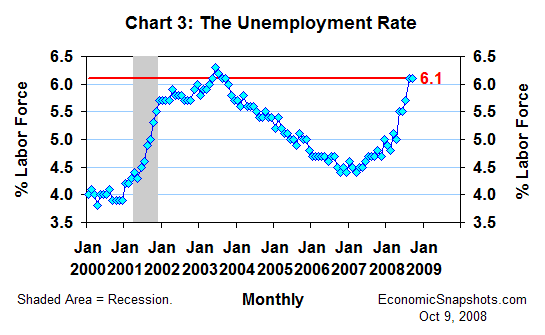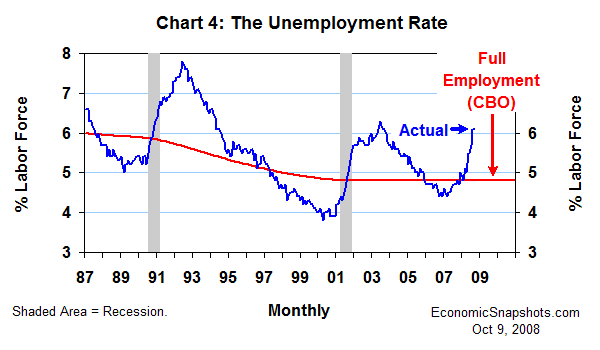
| Back to Index |
October 9, 2008 – In the data released last week, U.S. payroll employment fell by 159K in September after edging down by 73K in August (Chart 1). The weakness in September hiring was broadly based.

Hurricane Ike hit Louisiana and Texas during the period covered by the September payroll survey. However, the Bureau of Labor Statistics (BLS) said Ike did not seem to have played a major role in September’s payroll job count.
Payrolls fell by an average of 75K per month from January through August. With September’s more substantial drop, this slow erosion is threatening to turn into a landslide.
Payrolls fell by 0.4% in September, compared to the same month last year (Chart 2). In both of the last two recessions (in 1990-91 and in 2001), we saw similar year-ago payroll declines after the recession had been underway for six or seven months.

Both of the last two recessions were only eight months long. In both cases, however, it took a year or two of economic recovery to get payroll jobs back on a rising trend.
The U.S. unemployment rate was unchanged at 6.1% in September. That followed a huge 0.4 percentage point August leap (Chart 3).

In September, the unemployment rate exceeded the Congressional Budget Office’s 4.8% estimate of its “full-employment” level by 1.3 percentage points (Chart 4).

This gap (the actual minus the “full-employment” unemployment rate) was 1 percentage point at the trough of the 1990-91 recession and 0.7 percentage points at the trough of the 2001 recession. The fact that it was higher in September suggests more severe job shortages now.
In both of those earlier cycles, the unemployment rate stayed on a rising trend for over a year (fifteen to nineteen months) after the recession’s end.
Bottom line: signs of a deepening downturn in U.S. labor demand.
Suzanne Rizzo